Tom's Hardware Verdict
PNY's XLR8 Gaming Epic-X RGB DDR4-3200 C16 memory kit is a good partner for contemporary AMD and Intel processors that natively support DDR4-3200 memory.
Pros
- +
Acceptable performance
- +
RGB lighting doesn't require proprietary software
Cons
- -
Too expensive
- -
Limited overclocking potential
Why you can trust Tom's Hardware
Nowadays, it feels like the norm that every computer hardware company has a dedicated gaming sub-brand. For PNY, that would be XLR8 Gaming that currently competes in three major hardware markets: memory, gaming graphics cards, and SSDs. In terms of memory, the XLR8 Gaming branding is still a bit wet behind the ears, but the company has started to solidify its lineups. The Epic-X RGB series, in particular, is one of XLR8 Gaming's latest additions to its memory portfolio.



The Epic-X RGB memory modules come with a black PCB and a matching aluminum heat spreader. The design is as simple as it gets, and that's not a bad thing. The heat spreaders feature a few diagonal lines and the XLR8 logo in the middle. An RGB lightbar is positioned on top of the memory module to provide some flair. The memory measures 47mm (1.85 inches) tall, so it might get in the way of some CPU air coolers.
PNY didn't develop a proprietary program to control the Epic-X RGB's lighting, which will favor users who don't want to install another piece of software on their system. Instead, PNY is handing the responsibility over to the motherboard. Fear not, because the Epic-X RGB has all its bases covered. The memory's illumination is compatible with Asus Aura Sync, Gigabyte RGB Fusion, MSI Mystic Light Sync, and ASRock Polychrome Sync.
The Epic-X RGB memory kit is comprised of two 8GB DDR4 memory modules. They're built on a 10-layer PCB and feature a single-rank design. Thaiphoon Burner was unable to identify the integrated circuits (ICs) inside the Epic-X RGB. However, given the primary timings, the memory is likely using Hynix C-die chips.
Predictably, the Epic-X RGB runs at DDR4-2133 with 15-15-15-36 timings by default. There's a single XMP profile that brings the memory up to speed. In this case, it sets the memory modules to DDR4-3200 and the timings to 16-18-18-38. At this frequency, the memory draws 1.35V. For more on timings and frequency considerations, see our PC Memory 101 feature, as well as our How to Shop for RAM story.
Comparison Hardware
| Memory Kit | Part Number | Capacity | Data Rate | Primary Timings | Voltage | Warranty |
|---|---|---|---|---|---|---|
| Team Group T-Force Xtreem ARGB | TF10D416G3600HC14CDC01 | 2 x 8GB | DDR4-3600 (XMP) | 14-15-15-35 (2T) | 1.45 Volts | Lifetime |
| Gigabyte Aorus RGB Memory | GP-AR36C18S8K2HU416R | 2 x 8GB | DDR4-3600 (XMP) | 18-19-19-39 (2T) | 1.35 Volts | Lifetime |
| PNY XLR8 Gaming Epic-X RGB | MD16GK2D4320016XRGB | 2 x 8GB | DDR4-3200 (XMP) | 16-18-18-38 (2T) | 1.35 Volts | Lifetime |
| Lexar DDR4-2666 | LD4AU008G-R2666U x 2 | 2 x 8GB | DDR4-2666 | 19-19-19-43 (2T) | 1.20 Volts | Lifetime |
Our Intel test system consists of an Intel Core i9-10900K and Asus ROG Maximus XII Apex on 0901 firmware. On the opposite side, the AMD testbed leverages an AMD Ryzen 5 3600 and ASRock B550 Taichi with 1.30 firmware. The MSI GeForce RTX 2080 Ti Gaming Trio handles the graphical duties on both platforms.
Intel Performance
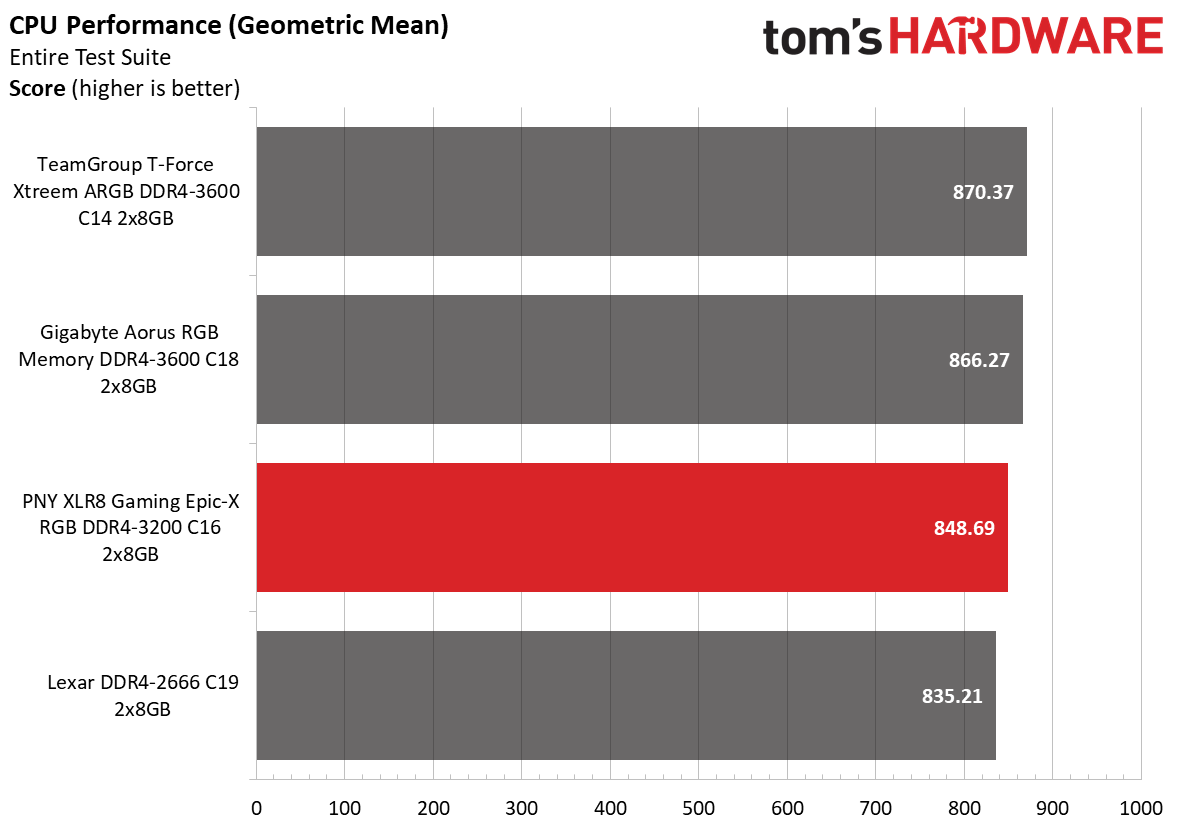









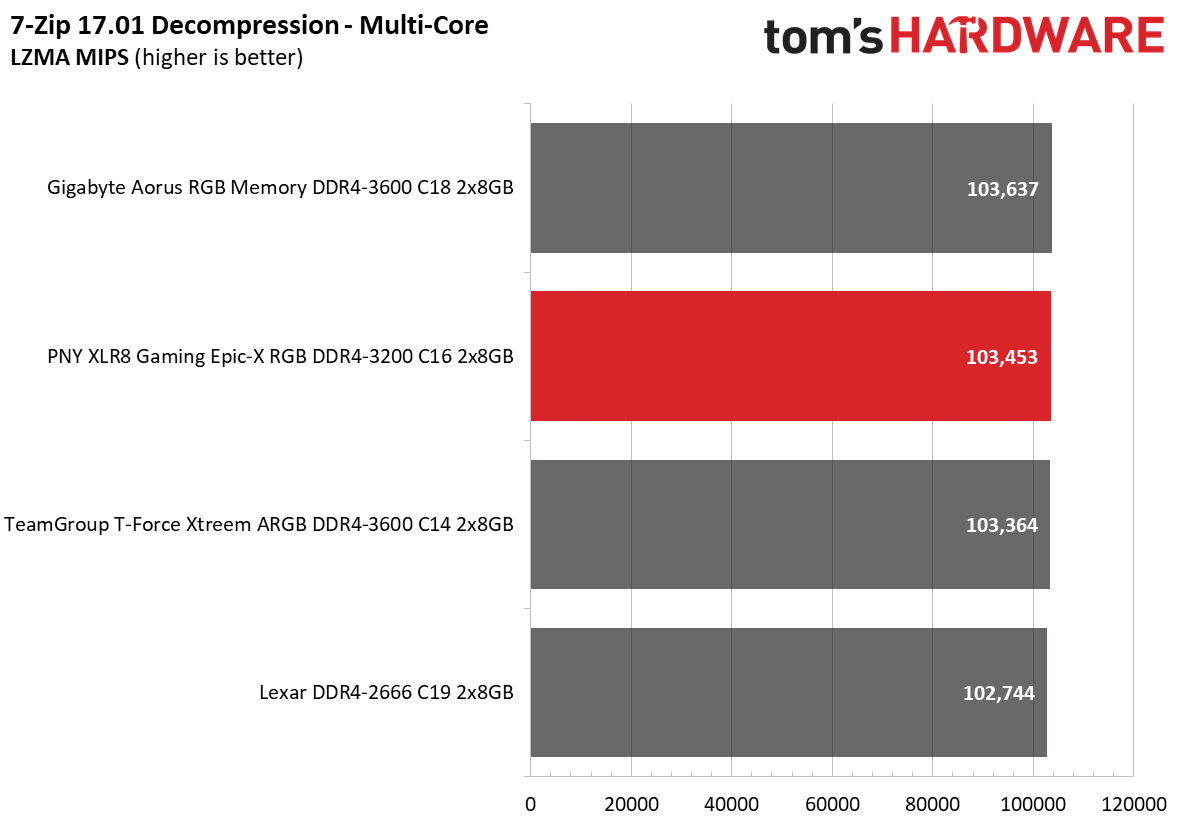








Predictably, the Epic-X RGB didn't beat the faster memory kits in our RAM benchmarks. Performance was consistent, with the Epic-X kit placing third overall on the application and gaming charts.
Get Tom's Hardware's best news and in-depth reviews, straight to your inbox.
AMD Performance



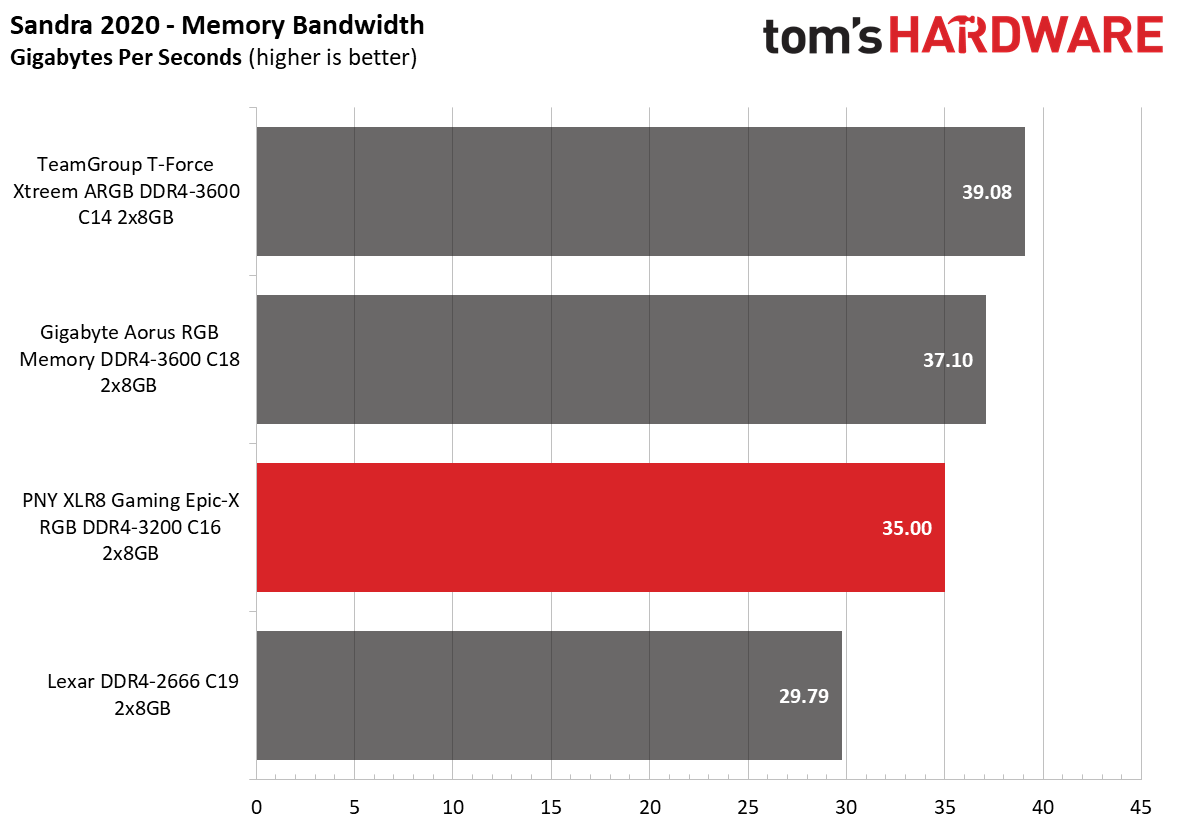






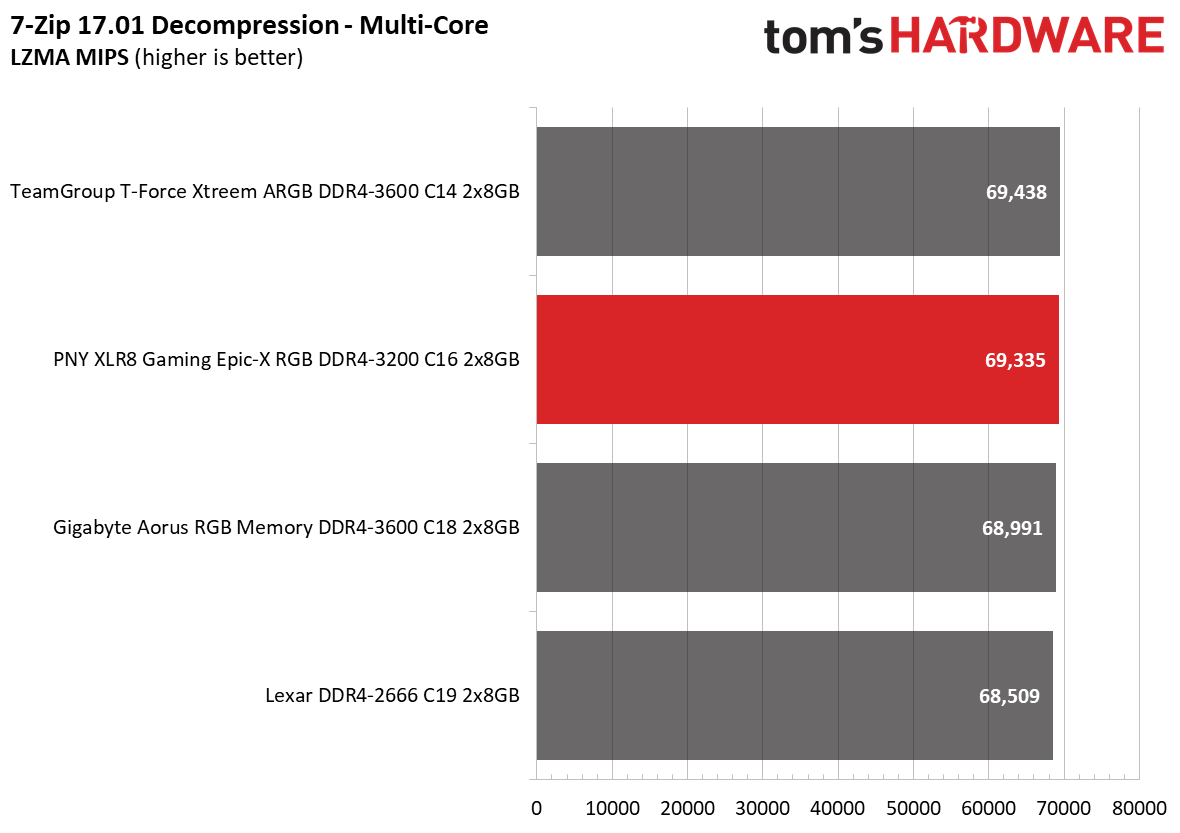





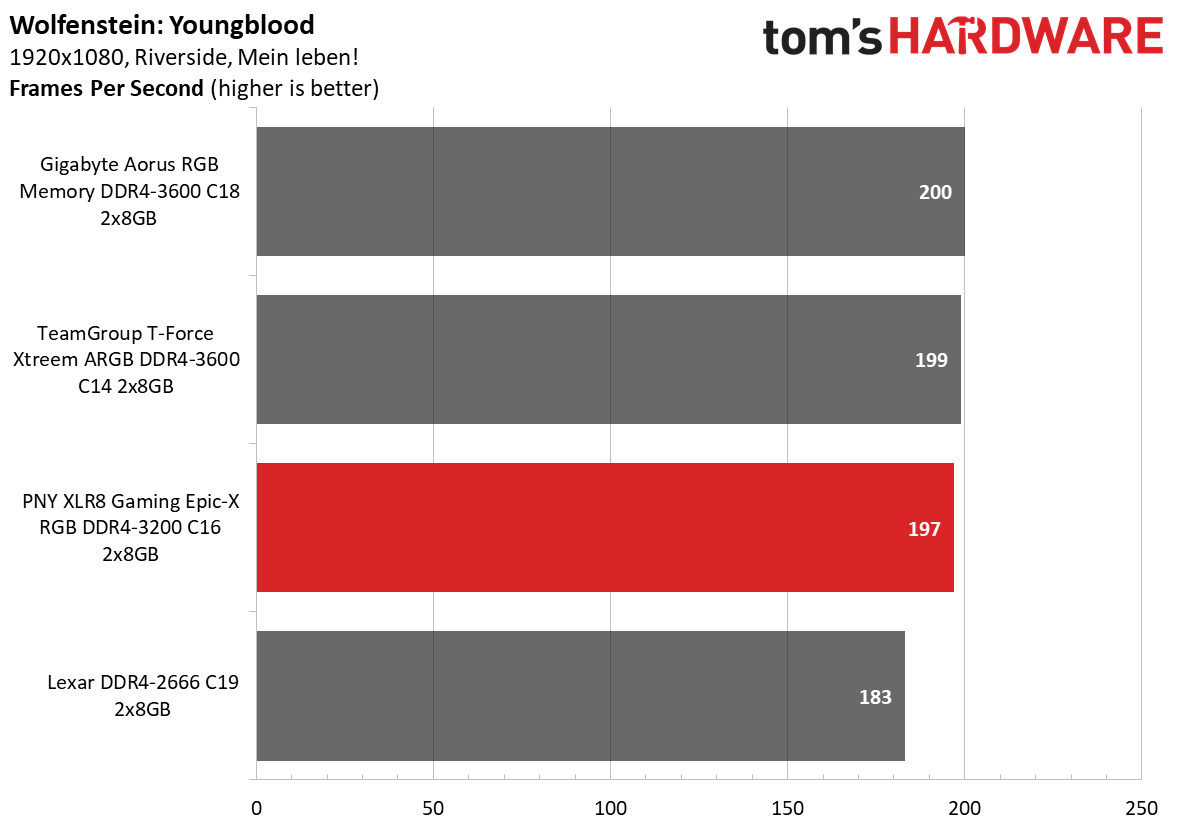


Things didn't change on the AMD platform, either. However, the Epic-X RGB did earn some merits since the memory kit was the fastest in the Cinebench R20 and HandBrake x264 conversion tests. The margin of victory was slim, though, at less than 1%.
Overclocking and Latency Tuning


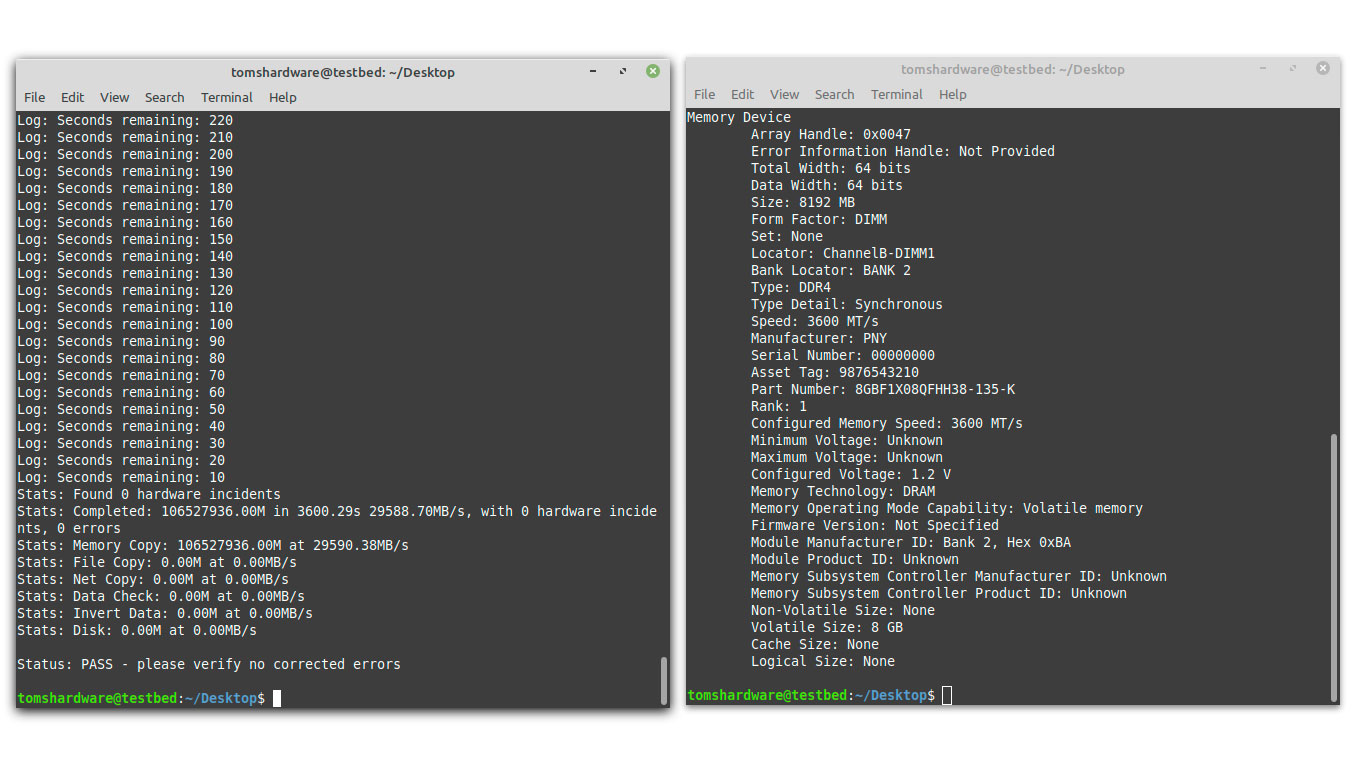
The Epic-X RGB isn't the best overclocker that we've had in the labs. Nevertheless, we squeezed an extra 400 MHz out of the kit. We could hit DDR4-3600 at 1.45V after we relaxed the timings to 20-20-20-40.
Lowest Stable Timings
| Memory Kit | DDR4-2666 (1.45V) | DDR4-3200 (1.45V) | DDR4-3600 (1.45V) | DDR4-3900 (1.45V) | DDR4-4200 (1.45V) |
|---|---|---|---|---|---|
| Team Group T-Force Xtreem ARGB | N/A | N/A | 13-14-14-35 (2T) | N/A | 19-19-19-39 (2T) |
| Gigabyte Aorus RGB Memory | N/A | N/A | 16-19-19-39 (2T) | 20-20-20-40 (2T) | N/A |
| PNY XLR8 Gaming Epic-X RGB | N/A | 15-18-18-38 (2T) | 20-20-20-40 (2T) | N/A | N/A |
| Lexar DDR4-2666 | 16-21-21-41 (2T) | N/A | N/A | 17-22-22-42 (2T) | N/A |
Sadly, we didn't have the same level of luck optimizing the Epic-X RGB at DDR4-3200. Even with a 1.45V DRAM voltage, we could only get the CAS Latency down from 15 to 16 clocks. The other timings wouldn't yield.
Bottom Line
In this day and age, enthusiasts are pursuing faster and faster memory kits. However, there's always space for a standard memory kit, and the XLR8 Gaming Epic-X RGB DDR4-3200 C16 kit could very well find its place with users that want to stick to a processor's official supported memory frequency. Today's modern processors, such as AMD's Zen 2 and Zen 3 processors and Intel's looming Rocket Lake processors, support DDR4-3200 memory right out of the box. The XLR8 Gaming Epic-X RGB DDR4-3200 C16 would fit nicely in this situation since you can just enable XMP and never look back.
The XLR8 Gaming Epic-X RGB DDR4-3200 C16 only has a tiny flaw, and that's pricing. The memory kit retails for $94.99 when the typical DDR4-3200 C16 kit starts at $74.99. Even the faster DDR4-3600 C18 memory kits sell for as low as $79.99. In PNY's defense, the Epic-X RGB memory modules do look nice with the RGB lighting and whatnot, so we can probably chalk the extra cost up to the RGB tax.

Zhiye Liu is a news editor, memory reviewer, and SSD tester at Tom’s Hardware. Although he loves everything that’s hardware, he has a soft spot for CPUs, GPUs, and RAM.
-
HideOut These memories are so 3 years ago. I mean honestly, my AMD 2700 would be perfect for these. Outdated for gamers for 2 gens at least.Reply
